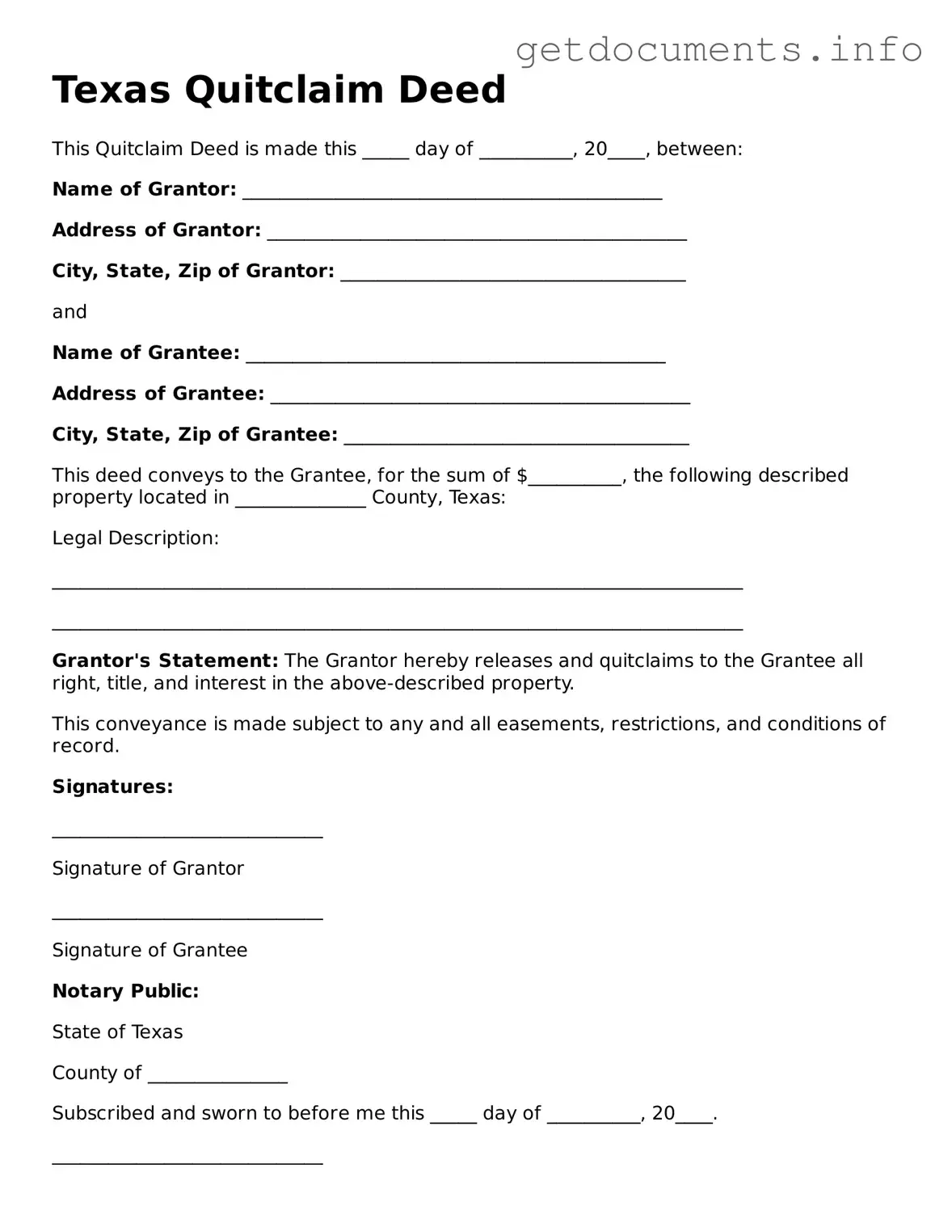The Texas Quitclaim Deed form serves as a significant legal instrument in real estate transactions, facilitating the transfer of property ownership without guaranteeing the title's validity. This form is particularly useful in situations where the granter may not possess clear title to the property or when the parties involved have a high degree of trust. It allows for the quick transfer of interest in real property, making it a favored choice for family members, divorcing couples, or individuals settling estates. The form typically requires essential information, including the names of the granter and grantee, a legal description of the property, and the date of execution. While it does not provide any warranties regarding the title, the Quitclaim Deed is straightforward and can be completed without the need for extensive legal procedures. However, it is essential for both parties to understand the implications of using this form, as it relinquishes any claim the granter has to the property, thereby transferring that interest to the grantee. Proper execution and recording of the deed are crucial steps to ensure the transfer is legally recognized and enforceable.
